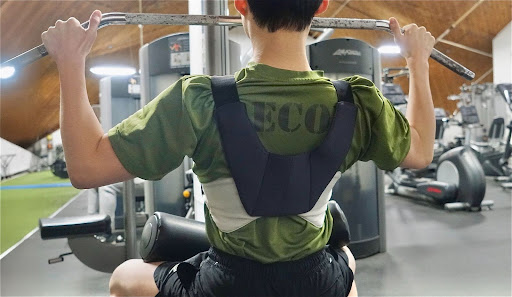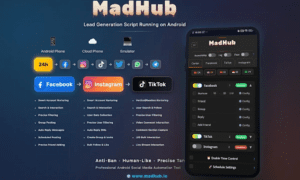In the ever-growing fitness industry, countless people chase the goal of building bigger, stronger muscles. Yet, while most gym-goers obsess over weights, reps, and sets, many overlook one crucial factor: controlled muscle stimulation. Seokhun You, an industrial designer passionate about wearable tech and soft goods, decided to address this overlooked area through his capstone project, Endura — a wearable haptic metronome designed to enhance the mind-muscle connection and promote more effective strength training.
The Missing Link in Modern Strength Training
It’s easy to assume that lifting heavier weights automatically translates to muscle growth. However, recent fitness science suggests that the quality of muscle engagement matters far more than the numbers on the barbell. In particular, controlling the tempo of each movement — how slowly or quickly a muscle contracts and extends — plays a critical role in hypertrophy (muscle growth) and strength development.
Despite this, many gym-goers find it difficult to maintain a steady tempo or to consistently activate the correct muscles during training. Seokhun’s research revealed that this problem is especially common among intermediate and advanced lifters who understand proper form but struggle with precision in tempo control.
In a survey conducted with 35 regular gym members, more than half identified hypertrophy and strength as their primary training goals. While 60% prioritized tempo, 40% admitted difficulty maintaining focus on specific muscle groups during each rep. This gap between intention and execution inspired the creation of Endura.
What Is Endura?
At its core, Endura is a wearable technology equipped with compact haptic sensors that deliver rhythmic vibrations at a constant 60 beats per minute (bpm). These vibrations serve as a physical metronome, guiding users to perform movements in a controlled, consistent tempo.
But what sets Endura apart is its focus on muscle-specific stimulation. Users can position the device directly on the muscle they’re targeting, with the velcro-topped sensor attaching securely to the garment. Whether it’s the biceps during curls or the quadriceps during leg extensions, the localized vibration helps heighten awareness and concentration, reinforcing the user’s mind-muscle connection — a mental focus technique shown to increase muscle activation.

Why It Matters
Endura addresses several critical challenges in fitness training:
- Increased EMG Activation: Seokhun’s research highlights that short, targeted vibrations during resistance exercises can boost EMG (electromyography) levels by 5% to 10%. This means that users can achieve more effective muscle contractions simply by staying in sync with the haptic feedback.
- Promoting Controlled Movements: Numerous studies show that resistance training with slower, deliberate movements can significantly increase muscle thickness and strength compared to uncontrolled, rapid lifting. Endura encourages athletes to stay within a consistent tempo, eliminating guesswork. This rhythmic pacing not only improves physical outcomes but also introduces a meditative dimension to weightlifting — helping users remain mentally present, focused, and connected to each repetition.
- Improved Focus for Experienced Lifters: Unlike beginner-oriented wearables, Endura is designed specifically for users with an intermediate to advanced understanding of body posture and exercise form. It enhances precision training, appealing to serious lifters aiming to overcome stubborn plateaus.
Human-Centered Design at Its Core
What makes Endura especially compelling is the thoughtful, research-driven design process behind it. As an industrial design student, Seokhun You intentionally concentrated on the wearable design aspect, rather than engineering hardware development. Every decision — from the placement of the haptic sensors to the choice of materials and strap configuration — was made with user experience in mind.
Seokhun emphasizes that Endura was built entirely based on evidence gathered through surveys, physical testing, and iterative feedback. His hypothesis, rooted in studies linking movement tempo to hypertrophy, guided the project from concept to completion.
The result is a sleek, unobtrusive wearable that comfortably integrates into a gym routine without disrupting form or range of motion. Its minimalist design allows users to attach the device wherever needed, ensuring maximum versatility and personal customization.
A Project Born From Passion
For Seokhun, Endura represents more than just a class assignment — it’s a product of his personal interest in fitness, human behavior, and problem-solving. As his college capstone project, he handled every stage independently, from initial concept development to user research, product design & development, and prototyping.
By focusing on how industrial design can improve real human experiences, Seokhun aimed to bridge the gap between fitness theory and practice, empowering users to achieve better results through smarter, more mindful training.
Moving Forward
While Endura remains a concept-level prototype, its potential applications are vast. As wearable technology continues to evolve, haptic feedback systems like Endura could become an integral part of future fitness routines — not only for athletes but for rehabilitation patients and physical therapy as well. The project was recently exhibited at Pratt Show 2024, highlighting its innovation and receiving attention from industry professionals and fellow designers alike.
Seokhun You hopes that his research and design approach inspire other designers to pursue evidence-based, human-centered solutions that address overlooked problems in everyday life.
About the Designer:
Seokhun You is an industrial designer with a strong focus on wearable technology, soft goods, and human-centered innovation. With a background in behavioral research and product development, he approaches design as a tool to solve overlooked problems in everyday life. His work blends intuitive form with evidence-based insights, often aiming to influence behavior through simplicity, comfort, and purposeful interaction.
Seokhun’s design philosophy centers on creating products that feel natural to use but have a lasting impact — a mindset clearly reflected in Endura. From ideation to prototyping and user testing, he led every stage of the project himself, demonstrating his strengths in both conceptual thinking and execution. Passionate about fitness, wellness, and rehabilitation, Seokhun is driven by the belief that great design should feel invisible — yet fundamentally transformative.





























